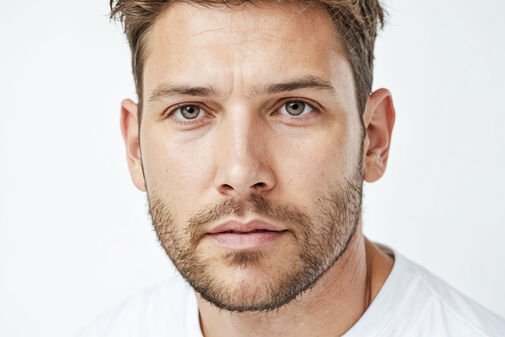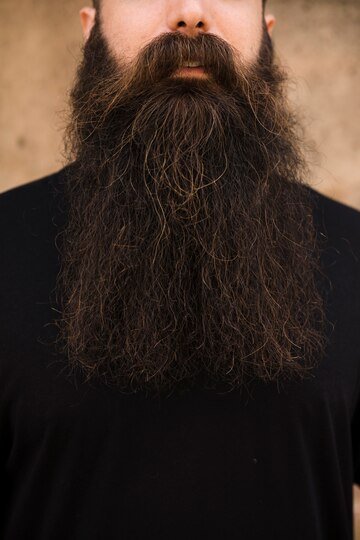Have you ever wondered if your beard will ever stop growing? It’s a common question among men who cherish their facial hair. Some see their beard grow long and thick, while others notice it seems to stay the same after a while. This happens because every beard is different—affected by things like genetics, how well you care for it, and even what you eat. In this article, we’ll explore why some beards appear to stop growing, clear up any misunderstandings, and uncover what really determines beard growth.
Topics Covered
Toggle
First Know the Reasons of Growing Beard
The speed and fullness of your beard growth depend on several factors, mainly genetics and hormones. If your father or grandfather had thick and fast-growing beards, there’s a good chance you will too. Your beard’s growth and appearance are mostly determined by genetics.
Hormones also influence beard growth. The two main hormones are testosterone and dihydrotestosterone (DHT), which are connected. Testosterone helps start the beard growth process by stimulating hair follicles. DHT, which is derived from testosterone, makes beard hairs thicker and darker.
Although some men believe they are incapable of growing a beard, this is typically untrue. Most men can grow some facial hair, though it may vary in thickness, color, and texture. Some might grow hair slowly or only in certain areas like the upper lip or jawline. But with time and patience, facial hair will continue to grow.
Does Your Beard Stop Growing?
Many men wonder if their beard will ever stop growing. The good news is that your beard will keep producing new hairs for as long as you live. However, this doesn’t mean your beard will grow endlessly long. After reaching a specific length, referred to as its “terminal length,” each beard hair will eventually fall out. When a hair falls off, a new one will sprout in its place.
Growing a beard can be a journey full of ups and downs. Sometimes, you might feel like your beard has stopped growing or isn’t growing as fast as it used to. This is normal and usually not permanent. There are times when beard growth can slow down or seem to stop, but it will usually pick up again.
If you’re concerned about your beard’s growth, there are ways to encourage it to grow again. With the right care and patience, you can help your beard reach its full potential.
Unlocking The Secret of Terminal Length in Facial Hair
You must be aware of “terminal length” in order to comprehend why it may appear that your beard is stopping to develop. This is the longest your beard hairs will grow before falling out and being replaced by new ones. Each hair has a growth cycle, which includes growing to a certain length, falling out, and then being replaced by a new hair.
The terminal length is different for everyone and is influenced by genetics. The hair on your arms, for instance, has a shorter terminal length than the hair on your beard. This is because the follicles on your arms are programmed to grow hair only to a certain length before it falls out.
Even though your beard reaches its terminal length, it doesn’t mean your beard stops growing. New hairs keep coming in to replace the old ones, so your beard always has fresh growth. While you can’t change your genetic terminal length, taking good care of your beard with a healthy diet, proper grooming, and reducing stress can help keep your beard looking its best.
Understanding terminal length helps you manage your expectations and take better care of your beard. Different parts of your beard might reach their terminal length at different times, so overall beard care is important to maintain a healthy and full look.
Is it Possible to Grow Your Beard More Than the Terminal Length?
The simple answer is no. You cannot grow your beard beyond its terminal length. This length is the maximum your beard can reach before the hairs naturally fall out and new ones grow in their place. However, you can take steps to keep your beard healthy and prevent it from falling out or curling back too soon. Proper beard care, including good nutrition, regular grooming, and reducing stress, can help maintain the health and appearance of your beard, even if you can’t make it grow longer than its genetic limit.
Cycle of Beard Growth
Knowing the beard development cycle will help you anticipate what to expect as your beard grows. There are three main phases in this cycle: the Anagen phase, the Catagen phase, and the Telogen phase.
Anagen Phase
The hairs in your beard are actively developing throughout this phase of growth. During this phase, cells in the roots of your hair are very active, and your beard can grow about half an inch each month. This phase can last from two to six years, depending on your genetics. Most of your beard hairs are in this phase at any given time.
Catagen Phase
The Catagen phase is a transitional phase where growth slows down. The hair follicles shrink and growth stops. This phase usually lasts around two to three weeks. You might start to feel like your beard isn’t growing as fast during this time.
Telogen Phase
The Telogen phase is the resting phase. The follicles that produce hair are inactive during this phase, and hair loss is possible. This phase can last for several months. It’s normal to lose about 50-100 hairs a day during this time. After the Telogen phase, new hairs will begin to grow again, starting the cycle over.
Understanding these phases can help you be patient with your beard growth and take better care of your facial hair. Even when it seems like your beard has stopped growing, it is likely just in a different phase of its cycle.
Tips to Achieve a Healthy Terminal Length Beard Quickly
Growing a healthy beard that reaches its terminal length requires a combination of proper care, good nutrition, and healthy lifestyle habits. Here are some effective tips to help you maximize your beard growth potential and achieve the full, robust beard you’ve always wanted.
Nourish with Beard Oil
One of the first steps to having a healthy beard is using a quality beard oil. Your hair follicles receive vital nutrients and moisture retention from beard oil. It improves blood circulation in your skin, which promotes healthy beard growth. Beard oil also strengthens your hair, reduces split-ends, and makes your beard appear longer and straighter.
Use a Derma Roller
If your beard is patchy or sparse, a Derma Roller can help. This tool has tiny needles that gently pierce the skin, stimulating hair growth by activating dormant follicles. It can also improve your skin’s health by boosting collagen and keratin production.
Maintain a Beard Trimming Routine
Regular trimming is crucial for a healthy beard. It helps remove split ends and promotes even growth. Additionally, taking care of your skin with a routine that includes cleansing, scrubbing, and moisturizing can remove dirt and dead skin cells that might hinder hair growth.
Improve Your Diet
Nutrition plays a significant role in beard growth. Foods rich in folic acid, like broccoli, and those high in vitamins C, A, and E can enhance the health of your hair follicles and slow down hair shedding. Incorporating whole grains and other nutrient-rich foods into your diet can support better beard growth.
Exercise Regularly
Regular exercise boosts your overall health and beard growth. Exercise increases testosterone production, which is vital for facial hair growth. Additionally, it increases blood flow, which guarantees that your hair follicles get enough nutrition and oxygen.
Manage Stress
Stress can have a detrimental effect on the growth of your beard. Practices like regular exercise, a healthy diet, and proper rest can help manage stress. Maintaining a healthy stress level will help your beard develop in a healthy way.
By following these tips, you can help your beard reach its healthy terminal length faster. Remember, while you can’t change your genetically determined terminal length, taking good care of your beard can help it grow as long and healthy as possible.



